
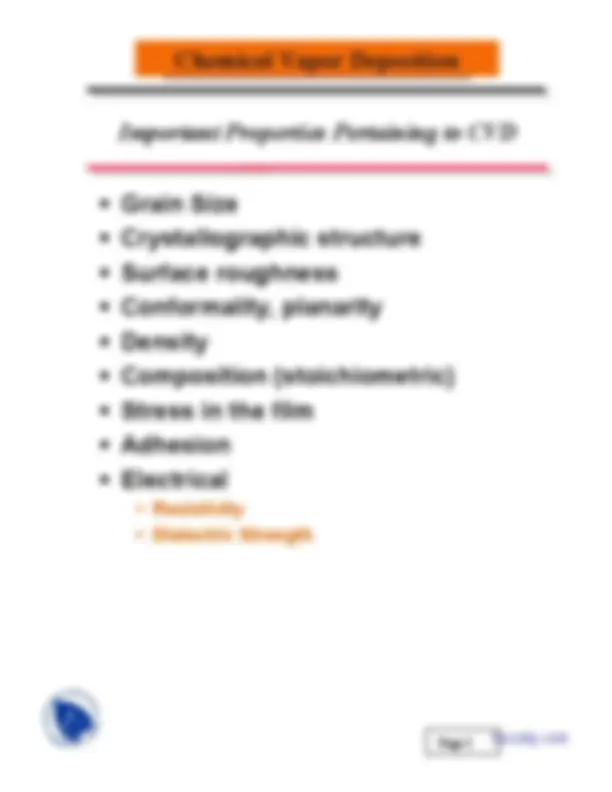
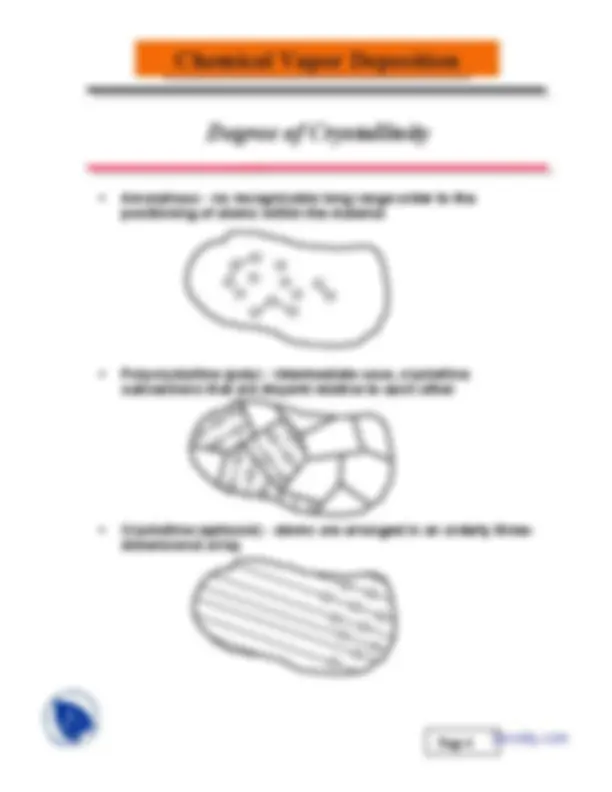
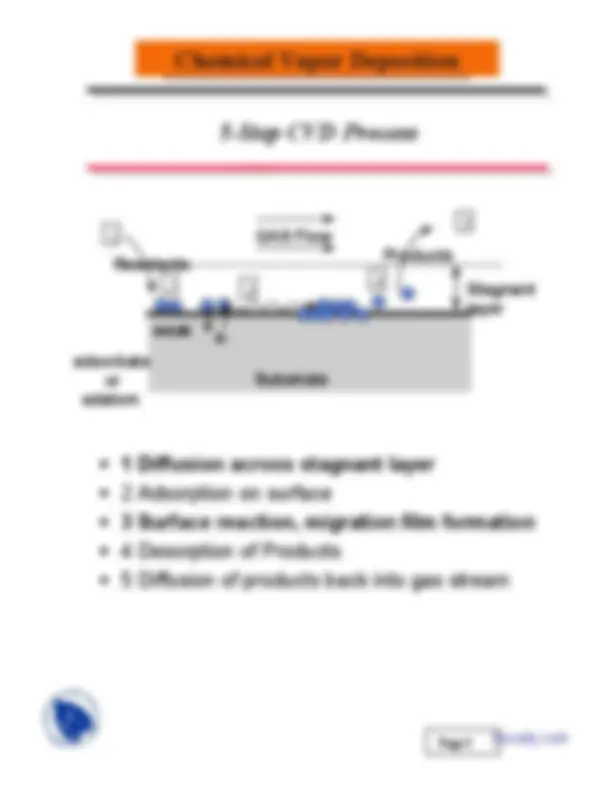
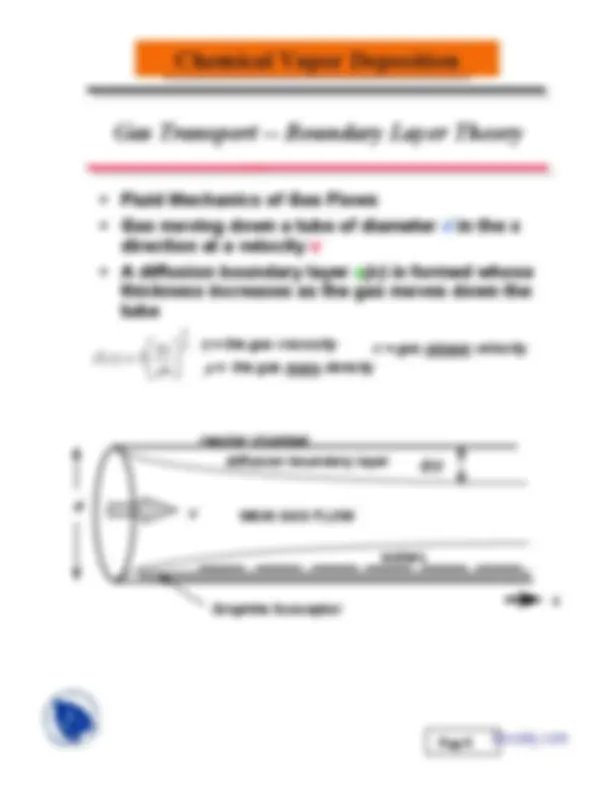
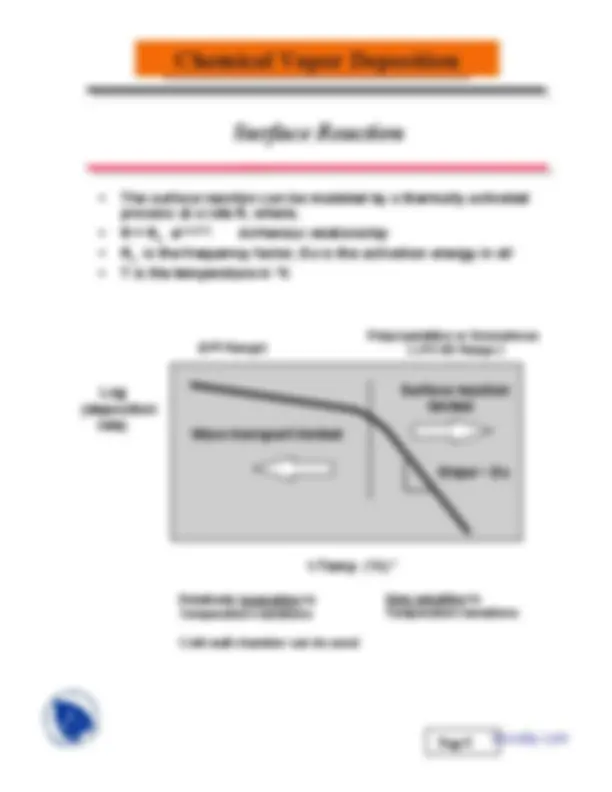


Study with the several resources on Docsity

Earn points by helping other students or get them with a premium plan


Prepare for your exams
Study with the several resources on Docsity

Earn points to download
Earn points by helping other students or get them with a premium plan
Community
Ask the community for help and clear up your study doubts
Discover the best universities in your country according to Docsity users
Free resources
Download our free guides on studying techniques, anxiety management strategies, and thesis advice from Docsity tutors
These are the Lecture Slides of Thin Film Materials Processing which includes Vaporization, Vapor Pressure Curves, Thermal Desorption, Molecular Binding Energy, First Order Desorption, Desorption Rate, Real Surfaces, Diffusion of Gas Particles etc. Key important points are: Chemical Vapor Deposition, Degree of Crystallinity, Growth Kinetics, Stagnant Film Model, Boundary Layer Theory, Gas Transport, Surface Reaction, Frequency Factor, Activation Energy
Typology: Slides
1 / 9

This page cannot be seen from the preview
Don't miss anything!






Docsity.com
Docsity.com
Amorphous - no recognizable long range order to the positioning of atoms within the material
Polycrystalline (poly) - intermediate case, crystalline subsections that are disjoint relative to each other
Crystalline (epitaxial) - atoms are arranged in an orderly three- dimensional array
Docsity.com
Docsity.com
original silicon surface
Cs
Cg
Main Gas Flow
s
Diffusion flow
Stagnant Layer
Gas Stream^ (linear gradient)
Epi Growth Wafer
Cs - Surface reactant concentration D = Diffusivity
Cg - Gas stream reactant concentration
surface reaction flow
F1 = D ( Cg - Cs ) s
Diffusivity times the concentration gradient
s
= hg = gas phase mass transfer coefficient
F1 = hg (Cg - Cs ) (^) F2 = Ks C (^) s For steady state Epitaxial Growth
F1 = F Therefore Cs = hg Cg Ks + hg^ F1 > F2 reaction limited F1 < F2 mass transport limited
Docsity.com
2
1
η = the gas viscosity
ρ = the gas mass density
v = gas stream velocity
diffusion boundary layer δ (x)
wafers
reactor chamber
d (^) v MAIN GAS FLOW
x Graphite Susceptor
Docsity.com